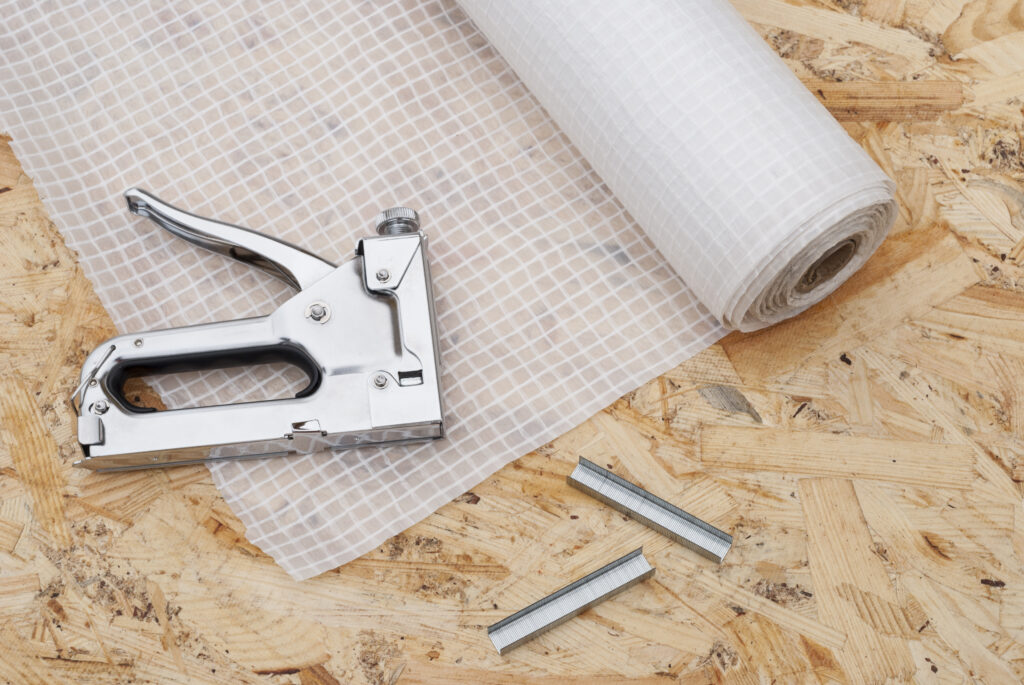Every homeowner wants to protect their house, and one of the essential areas often overlooked is the crawl space. Installing a crawl space vapor barrier can safeguard your home from moisture buildup, mold, and mildew, thus improving the air quality in your living environment.
This article explores the best crawl space barrier installation breakdown, including material types, thickness, and how to choose the most suitable barrier for your home.
Why Install a Crawl Space Barrier?
Crawl spaces are prone to dampness and can become breeding grounds for mold and mildew. To prevent this, a vapor barrier shields against moisture from the earth entering the crawlspace.
Crawl space vapor barriers, along with crawl space clean up, also help prevent the rise of damp air into your living space, thereby improving air quality and energy efficiency in your home.
Best Types of Material for Crawl Space Encapsulation
The material used for your crawl space vapor barrier plays a significant role in its effectiveness. The most commonly used materials are polyethylene plastic sheeting and reinforced polyethylene plastic sheeting.
Polyethylene plastic sheeting is popular because it’s durable, waterproof, mold, and mildew-resistant. This material makes it easy to replace your vapor barrier with a long-lasting material.
Reinforced polyethylene, on the other hand, is an upgraded version of regular polyethylene with added strength to prevent tears or punctures. The reinforcement, usually a woven polyester cord, gives it exceptional durability, making it a suitable choice for a crawl space liner that demands high performance.
How Vapor Barrier Thickness is Measured
The effectiveness of a vapor barrier is often measured in terms of its thickness and perm rating. The thickness of a vapor barrier is measured in mils, where 1 mil is equal to 0.001 inches of thickness. Common thicknesses include 6 mil, 10 mil, 12 mil, and 20 mil.
The thicker the vapor barrier, the more durable it tends to be. For instance, a 6 mil plastic sheeting may be suitable for a basic level of moisture protection, but a 12 mil or 20 mil vapor barrier would offer superior resistance to punctures and tears.
The perm rating, conversely, determines the amount of water vapor that can pass through a material. The lower the perm rating, the better the material prevents moisture transmission.
What is Perm Rating?
The perm rating serves as a standard for measuring the rate at which water vapor can pass through a one-square-foot area of a material.
Contrary to popular belief, encapsulation vapor barriers are not waterproof. Instead, they are water vapor retarders, as they all allow some degree of moisture passage. However, some are better at limiting moisture penetration than others.
In technical terms, a perm refers to the ability of 1 gram of water vapor to travel through a material in one hour, over a square foot, under an applied pressure of one inch of mercury. Consequently, a higher perm rating means that more water vapor can flow through the material.
The most basic option available, the Class 1, 6-mil polyethylene sheeting often found in hardware stores, boasts a perm rating of approximately 0.06. This vapor barrier represents the minimum mil thickness accepted by building codes for crawl space ground cover.
10 Mil Vs. 20 Mil – Why Vapor Barrier Thickness Matters
Choosing the right thickness for your crawl space vapor barrier ensures its effectiveness and durability. This is usually measured in mils, with common choices being 10 mil and 20 mil.
A 10 mil vapor barrier is a thinner option that provides decent protection against moisture. It is an economical choice and can be ideal for crawl spaces that aren’t exposed to heavy traffic or substantial wear and tear.
On the other hand, a 20 mil vapor barrier offers superior protection due to its increased thickness. This type of barrier is more resistant to punctures and tears, making it well-suited for high-traffic areas or situations where a higher degree of protection is necessary. While a 20 mil vapor barrier may cost more and require more effort to install, it also offers enhanced durability and longevity.
Remember, just one tear in a vapor barrier will allow moisture to pass, so make sure to choose the right thickness for your situation.
Reinforced or Puncture Proof Vapor Barrier – Which is Better?
The two main options for a vapor barrier for your crawl space barriers are reinforced and puncture-proof vapor barriers. Both have their strengths and are suitable for different situations.
Reinforced vapor barriers feature a layer of polyester cord between layers of polyethylene. This reinforcement provides added strength and resilience, making it more resistant to tears and punctures. It’s a robust choice for high-traffic areas and also offers excellent water vapor protection.
Puncture-proof vapor barriers, on the other hand, are designed to withstand heavy-duty usage and extreme conditions. They are incredibly durable and resistant to wear and tear.
Reinforced vapor barriers don’t always make much sense as they are rarely pulled on. However, laying a barrier over a dirt floor means that a resilient, puncture-proof material is the most logical choice, even more so if it will have frequent foot traffic.
Ultimately, the choice between a reinforced and puncture-proof vapor barrier depends on your crawl space’s specific needs and conditions.
Choosing a Crawl Space Barrier Thickness
Selecting the appropriate thickness for your crawl space vapor barrier is vital. The right thickness ensures optimal performance and longevity of your vapor barrier.
As previously discussed, the thickness of a vapor barrier is measured in mils. Common options range from 6 mil, which is the thinnest, to 20 mil, which offers the most robust protection.
A 6 mil vapor barrier, though it provides the most basic protection, is often the most economical choice. It may serve well in crawl spaces that are rarely accessed and don’t house heavy equipment.
Ten mil or 12 mil options offer a middle ground, balancing durability and cost-effectiveness. These thicknesses are less susceptible to punctures and tears than a 6 mil barrier.
Lastly, a 20 mil vapor barrier is the thickest commonly used option, providing the highest level of protection. It is a good choice for high-traffic areas or places with heavy equipment.
Are You Ready to Create A Well-Protected Crawl Space for a Healthier Home?
In conclusion, the proper crawl space vapor barrier is essential to maintaining a healthy, comfortable home. It protects against moisture buildup, mold and mildew growth, and potential structural damage.
Whether you choose a 6 mil plastic sheeting or a reinforced 20 mil barrier, you need to consider your specific needs, your budget, and the conditions of your crawl space. Not sure what your crawl space needs? Call Attic Pros, the professional vapor barrier installation service near you.
Contact us for a free quote for improving your crawl space and expert advice on crawl space vents and dehumidifier installation.

